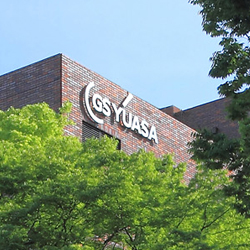GS Yuasa Corporation (Tokyo Stock Exchange: 6674; “GS Yuasa”) today announced that its application for a grant for the “FY2020 Demonstration Project for the Construction of a Virtual Power Plant that Utilizes Demand-Side Energy Resources” has been accepted. The project is sponsored by the Ministry of Economy, Trade and Industry’s Agency for Natural Resources and Energy. GS Yuasa received notification on August 26, 2020 that its project proposal had been accepted by the Sustainable open Innovation Initiative, the organization responsible for issuing grants for the project.
Virtual power plants (“VPPs”) are systems that utilize IoT devices to remotely control dispersed energy sources such as small-scale solar power generators and storage batteries to enable them to function collectively in a similar manner to a single electric power plant. It is hoped that VPPs will play a significant role in electricity grids as a means to balance power supply and demand through load leveling, absorption of surplus power from excess supply of renewable energy, supplying electricity during power shortages, and so on.
GS Yuasa has been participating in VPP demonstration projects since FY2016, introducing the use of large storage batteries and conducting verification testing of methods to control them. In FY2017, GS Yuasa installed a container-type Electricity Storage System (“ESS”) at its Kyoto plant and demonstrated its electricity supply-demand adjustment capabilities when controlled based on instructions from a large external storage battery server.
This time, GS Yuasa plans to install an additional ESS at the Kyoto plant to perform electricity supply-demand balance adjustment, conduct peak cutting when the power supply is tight, and to supply power for specific uses at the plant during commercial power outages.
In accordance with its business continuity plan, in the event of commercial power outages, GS Yuasa plans to combine power from the ESSs and existing solar power generation facilities to supply electricity for lighting, power outlets, and air conditioning facilities in the plant’s employee amenity building and will use the building as a disaster response base.
[Overview of ESS to be installed]
1. Location: GS Yuasa’s Kyoto plant
2. Equipment to be installed: ESS for public sector and industrial use/LINE BACK Ω ES
3. Capacity: Output 500kVA; storage battery capacity 506.0kWh
Through this demonstration project, GS Yuasa aims to develop new energy management methods based on linking storage batteries and IoT technologies, facilitate energy use optimization through the utilization of such methods, and further expand the installation of storage batteries at renewable energy power generation facilities. By participating in the project, GS Yuasa is aiming to help contribute to the realization of a low-carbon society.





